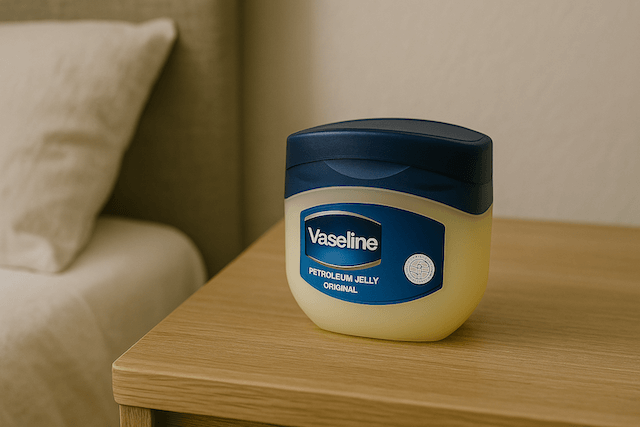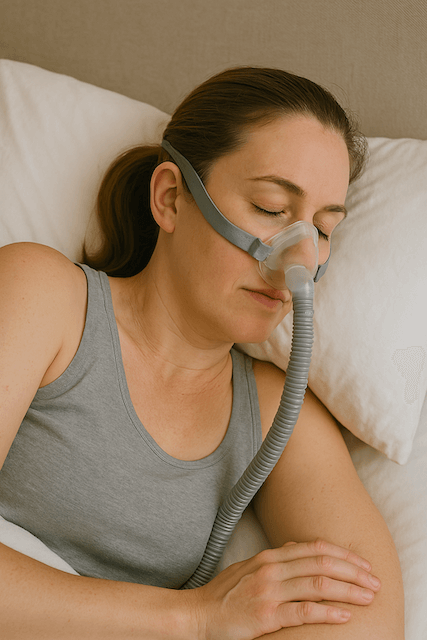Can You Use Vaseline With a CPAP Mask?
Jeremy Smith is a long-term CPAP user and sleep apnea advocate. After being diagnosed with severe obstructive sleep apnea, he created ByJeremySmith.com to help others navigate CPAP therapy through personal stories, gear reviews, and practical advice.
Can You Use Vaseline With a CPAP Mask?
If you regularly use a CPAP, you might have considered using Vaseline to help with skin discomfort or dryness.

However, it’s crucial to understand the potential implications of applying petroleum-based products like Vaseline in conjunction with your CPAP equipment.
The Interaction Between Vaseline and CPAP Masks
Most CPAP masks have silicone components to create a secure and comfortable seal. Introducing petroleum-based substances, such as Vaseline, can compromise this seal by:
- Degrading Silicone Materials: Petroleum jelly can cause silicone to break down over time, reducing mask efficacy and a shorter lifespan.
- Compromising Mask Seal: A degraded mask may not fit properly, resulting in air leaks that diminish the effectiveness of your therapy.
- Increasing Skin Irritation: Leaks and improper fit can lead to skin discomfort, redness, and pressure sores.
Expert Recommendations
Healthcare professionals and CPAP manufacturers advise against using petroleum-based products with CPAP masks. For instance, the Corvallis Clinic explicitly states:
“DO NOT USE VASELINE OR OIL BASED PRODUCTS! They can cause problems in your lungs, and break down the seal in your mask.” The Corvallis Clinic
Safer Alternatives to Vaseline
To maintain both skin health and the integrity of your CPAP equipment, consider the following alternatives:
1. CPAP-Specific Moisturizers
Opt for water-based, non-petroleum moisturizers explicitly designed for CPAP users. These products hydrate the skin without affecting the mask’s seal.
2. CPAP Mask Liners
Mask liners are a barrier between your skin and the mask, reducing friction and absorbing moisture. They can help prevent irritation and improve comfort. For a detailed guide on selecting the best mask liners, visit my best CPAP Mask Liners page.
3. Adjusting Sleep Positions
Your sleeping position can influence how your mask fits and feels. Certain positions may reduce pressure points and minimize the risk of mask lines or leaks.

4. Preventing Mask Lines
If you’re experiencing marks or lines from your mask, there are strategies to mitigate this issue, such as adjusting the mask fit or using specific accessories.
Explore our tips on How to Prevent CPAP Mask Lines on Your Face.
Additional Tips for Skin Care and CPAP Use
- Maintain Regular Cleaning: Regularly clean your mask, tubing, and headgear with mild soap and warm water to prevent bacterial buildup and skin irritation.
- Ensure Proper Mask Fit: An ill-fitting mask can cause leaks and discomfort. Work with your healthcare provider to find a mask that fits well and suits your sleeping style.
- Use a Humidifier: Incorporating a humidifier with your CPAP machine can prevent dryness in your nasal passages and skin, enhancing overall comfort.
Conclusion
While Vaseline might seem like a convenient solution for skin discomfort during CPAP therapy, its petroleum base can harm your mask’s silicone components and compromise your treatment.
You can enhance comfort without risking equipment damage by opting for CPAP-friendly moisturizers, utilizing mask liners, adjusting your sleep position, and maintaining proper hygiene.
I hope this Can You Use Vaseline With a CPAP Mask, article has helped.
Disclaimer: The content on this blog is for informational and educational purposes only and is not a substitute for professional medical advice. Always speak with your doctor or sleep specialist before starting, stopping, or changing any treatment or therapy related to sleep apnea or CPAP use.





